
The capital of Tamil Nadu, Chennai is a historically quite a significant place. This beautiful city has enough to offer almost everyone with its pristine beaches, majestic temples, and lip-smacking cuisine. Given below are some of Chennai’s must-see locations. You can’t afford to miss them on your next trip to Chennai.
Marina Beach: This is the second-longest beach in the world and one of Chennai’s well-known spots. This absolutely lovely beach is just perfect for a morning walk, seeing the sunset, or simply unwinding and basking in the sea breeze. It would literally feel like paradise.
The ancient Kapaleeswarar Temple, a masterpiece of Dravidian architecture, is dedicated to Lord Shiva. The temple has a stunning gopuram (tower) that is nearly 40 metres high and a nicely sculpted Nandi in the inner sanctum (the sacred bull).
Fort St. George: The British East India Company built this ancient fort in 1644, and it served as the seat of the British administration in India. The Tamil Nadu Legislative Assembly and a museum detailing the history of the British era in India are presently located in the fort.
Government Museum: One of India’s oldest museums, the Government Museum is situated in the centre of Chennai. The Government Museum features a large collection of antiques, which includes bronze sculptures, traditional crafts, and ancient coins.
Mahabalipuram: Just west of Chennai, Mahabalipuram is a UNESCO World Heritage site and the home of some of India’s most beautiful temples and stone carvings. The Shore Temple, a perfect example of Dravidian architecture, is the most famous attraction in Mahabalipuram.
To know more about the customs, works of art, and crafts of South India, you can visit DakshinaChitra, a museum that highlights the region’s rich and beautiful cultural legacy. The museum features more than 18 heritage houses that have been faithfully reconstructed for the visitors to get a proper sense of life in South India.
Guindy National Park: This urban oasis in the centre of a concrete jungle is called Guindy National Park, and it is located right in the centre of the metropolis. Deer, blackbucks, and several other exotic bird species may be seen in this park along with other types of flora and wildlife.
One of Jesus Christ’s apostles, St. Thomas, is buried under the Santhome Basilica, a stunning basilica. The church’s design is a lovely fusion of European and Indian forms, and it features stunning stained-glass windows.
Finally, Chennai is a city that offers a lot, from its stunning beaches to its magnificent historic temples and rich cultural legacy. There is so much more to see in Chennai; these must-visit locations are only the tip of the iceberg. And hence, make sure you include Chennai in your itinerary if you’re planning a vacation to South India anytime soon.
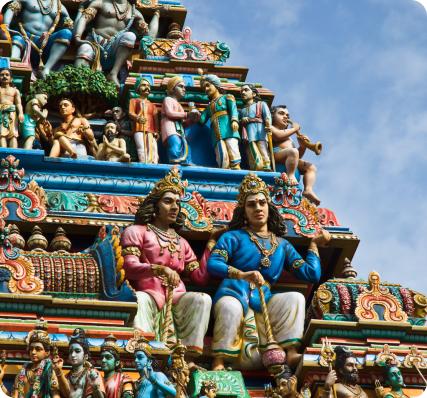
Chennai, usually referred to as Madras, is a city in southern India. The city has a rich cultural heritage and is home to a number of holy places that attract devotees globally. Chennai offers a huge variety of religious attractions to see. It ranges from historic temples to contemporary churches. Given below are a few of Chennai’s spiritual locations.
Kapaleeshwarar Temple is an iconic Hindu temple that is dedicated to Lord Shiva. The temple is renowned for its magnificent Dravidian design and intricate sculptures. Moreover, the temple includes a stunning tank or pond that is used for ritual bathing.
Santhome Cathedral is a Roman Catholic church that is thought to have been constructed on St. Thomas’s grave, one of the apostles who made up Jesus Christ’s original twelve. With terribly beautiful stained-glass windows, the cathedral is a magnificent example of neo-Gothic architecture.
Parthasarathy Temple: Another well-known Hindu temple in Chennai is Parthasarathy Temple. According to legend, the Pallava princes in the eighth century constructed the temple, which is devoted to Lord Krishna. The temple is a favourite pilgrimage site and has lovely sculptures.
One of the grandest mosques in India is the Thousand Lights Mosque, which is located in the heart of Chennai. The mosque is famed for its stunningly gorgeous architecture and acquired its name from the numerous oil lamps that are lit on important occasions.
One of Chennai’s oldest churches, St. Mary’s Church is renowned for its stunning architecture, and tranquil and calm environment. The church, which is greatly loved by followers, is said to have been built by the British people back in the 17th century.
The Vadapalani Murugan Temple is a Hindu temple. Lord Murugan is worshipped in this holy temple. A 40-foot-tall statue of Lord Murugan may be found within the holy place, which is renowned for its beautiful architecture.
Marundeeswarar Temple is a Hindu temple where Lord Shiva is worshipped by devotees. According to a legend, the Chola kings in the 11th century created the temple. It is now famous all over the world for its brilliantly executed construction.
To conclude, Chennai is a city with a rich cultural and historical heritage. The many religious sites that may be found in the city include many more than the holy locations mentioned above. Chennai is undisputedly worthwhile a visit, irrespective of whether you are a worshipper or simply interested in learning more about India’s rich cultural heritage.
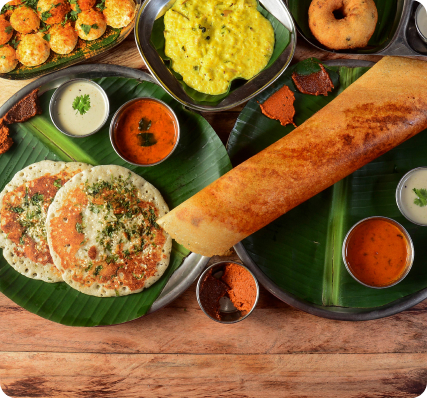
Chennai, the capital city of Tamil Nadu, India, is a city with a rich cultural heritage and a vibrant food scene. The cuisine of Chennai is heavily influenced by the Tamil culture, and its traditional food is a unique blend of spices, flavors, and ingredients that reflect the city’s history, geography, and local customs.
One of the most distinctive aspects of Chennai’s traditional food is its ethnic taste. The food here is prepared using a variety of local ingredients, spices, and cooking techniques that are unique to the region. The cuisine is also heavily influenced by the city’s diverse population, which includes Tamil Brahmins, Chettinadu, Tamils, and others.
One of the most iconic dishes of Chennai’s traditional food is the humble dosa. This thin, crispy pancake made from fermented rice and urad dal batter is a staple in every Tamil household. It is typically served with a variety of chutneys and sambar, a spicy lentil soup. The dosa has a mild flavor and a crispy texture, which makes it an ideal base for a variety of toppings, from spicy potato filling to cheese and onion.
Another popular dish in Chennai’s traditional food is the biryani. The city’s biryani is unique in that it is a fusion of the Tamil and Muslim cooking styles. The biryani is typically made with long-grain rice, aromatic spices, and tender meat or vegetables. The dish is slow-cooked, which allows the flavors to blend together and intensify. The result is a dish that is rich, flavorful, and bursting with spices.
Chennai’s traditional food also includes a variety of vegetarian dishes that are popular among locals and tourists alike. One such dish is the sambar, a tangy and spicy lentil soup that is made with a variety of vegetables such as eggplant, pumpkin, and carrots. The dish is often served with rice or as a side dish to dosa, idli, or vada. Another popular vegetarian dish is the rasam, a thin soup made from tamarind juice, tomato, and spices. The rasam has a tangy and spicy flavor that is perfect for those who love a bit of heat in their food.
In addition to its delicious food, Chennai is also known for its street food culture. The city’s street vendors offer a variety of tasty snacks, such as vada pav, masala puri, and chaat. These dishes are made with a variety of local ingredients and spices, and they are often served on paper plates or in banana leaves, giving them an authentic feel.
In conclusion, Chennai’s traditional food is a reflection of its rich cultural heritage and diverse population. The cuisine is characterized by its unique blend of spices, flavors, and ingredients, and it has a distinct ethnic taste that sets it apart from other Indian cuisines. Whether you are a vegetarian or a meat lover, there is something for everyone in Chennai’s traditional food. So, the next time you visit Chennai, be sure to try out its delicious food and experience its unique culinary culture.
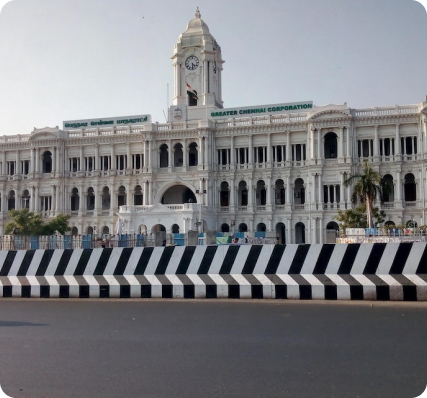
Chennai, formerly known as Madras, is the capital city of the Indian state of Tamil Nadu. It is a vibrant metropolis with a rich history that dates back more than 2,000 years. The city has been ruled by various empires and dynasties, each of which has left its mark on its culture and architecture. In this article, we will explore the history of Chennai and how it has evolved over the centuries.
The history of Chennai can be traced back to the 1st century AD, when it was a small fishing village known as Madraspatnam. It was situated on the Coromandel Coast, which was an important trading route between India and other countries in Southeast Asia. Madraspatnam was ruled by the Pallava dynasty, who were known for their architectural accomplishments such as the Shore Temple in Mahabalipuram.
In the 16th century, the Portuguese arrived in Chennai and established a settlement. They built a fort called Fort St. George, which became the center of their activities in the region. The British arrived in the early 17th century and took control of the fort. Chennai became an important center for trade and commerce, and it was one of the most prosperous cities in India during the colonial era.
The British developed Chennai into a major port city, and it became an important center for trade and commerce. They established institutions such as the Madras High Court, which is one of the oldest high courts in India. Chennai also became an important center for education, with the establishment of the University of Madras in 1857.
During the Indian independence movement, Chennai played a significant role in the struggle for freedom from British rule. The city was the site of many important events, including the Non-Cooperation Movement, the Salt Satyagraha, and the Quit India Movement. Many prominent leaders of the Indian independence movement, such as Mahatma Gandhi and C. Rajagopalachari, spent time in Chennai and worked towards India’s independence.
After India gained independence in 1947, Chennai continued to grow and develop. It became an important center for industry and technology, with the establishment of the Chennai Port Trust and the growth of the automobile industry in the region. Chennai also became a hub for the IT industry, with the establishment of the Tidel Park, which is one of the largest IT parks in Asia.
In conclusion, the history of Chennai is a fascinating journey that reflects the city’s rich cultural heritage and its evolution over time. From its humble beginnings as a fishing village to its emergence as a major port and center for trade and commerce, Chennai has played a significant role in India’s history. Today, it is a bustling metropolis that continues to grow and evolve, while preserving its unique heritage and cultural identity.
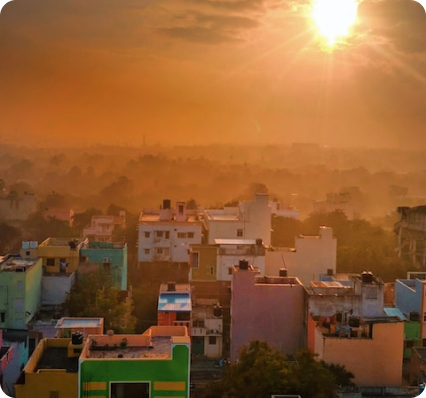
Chennai, the capital city of the Indian state of Tamil Nadu, is situated on the eastern coast of the country. It is one of the largest and most populous cities in India, with a population of over 7 million people. The geography of Chennai is diverse and influenced by its coastal location, which has played a significant role in its history and development.
Chennai is situated on the Coromandel Coast, which is known for its long and sandy beaches. The city is located at the mouth of the Cooum River, which flows through the city and empties into the Bay of Bengal. The city’s coastline extends for about 25 kilometers, and it is dotted with several beaches such as Marina Beach, Elliot’s Beach, and Besant Nagar Beach.
Chennai is also surrounded by several hills, including the Eastern Ghats, which form the city’s western boundary. The city’s topography is relatively flat, with an average elevation of about 6 meters above sea level. The city’s climate is tropical, with hot and humid summers and mild winters.
The city’s location on the coast has played a significant role in its history and development. Chennai has a long and rich maritime history, and it was an important center for trade and commerce during the colonial era. Today, it is one of the largest ports in India, and it continues to be an important center for international trade.
The geography of Chennai has also influenced its culture and cuisine. The city’s proximity to the sea has led to the development of a unique coastal cuisine, which is known for its use of seafood and coconut milk. The city is also known for its traditional handicrafts, such as the Kanchipuram silk sarees, which are made from silk produced in nearby towns.
In conclusion, the geography of Chennai is diverse and influenced by its coastal location, which has played a significant role in its history and development. The city’s long coastline, surrounded by hills, has contributed to its unique culture and cuisine. As Chennai continues to grow and evolve, its geography will continue to play a significant role in shaping its future.
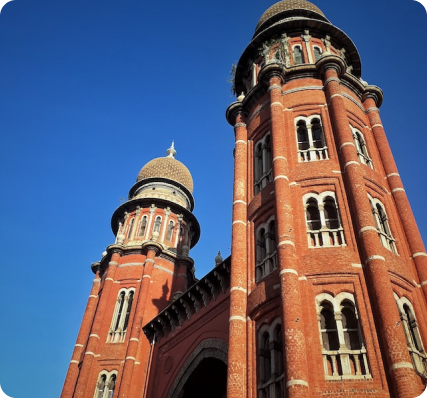
Chennai, the capital city of Tamil Nadu, India, is a bustling metropolis that is known for its rich cultural heritage and beautiful architecture. The city has a history that spans several centuries, and this is reflected in the many architectural styles that can be found in its buildings and monuments. In this article, we will explore the architecture of Chennai and what makes it unique.
One of the most striking features of Chennai’s architecture is its blend of traditional and modern styles. The city has a rich cultural heritage that is evident in its many ancient temples, palaces, and other historical buildings. At the same time, it is a modern metropolis with high-rise buildings, modern infrastructure, and contemporary architecture.
The ancient temples of Chennai are some of the city’s most famous landmarks. These temples, which date back several centuries, are built in the Dravidian style of architecture. This style is characterized by its towering gopurams (entrance towers), intricate carvings of gods and goddesses, and colorful frescoes. Some of the most famous temples in Chennai include the Kapaleeswarar Temple, the Parthasarathy Temple, and the Vadapalani Murugan Temple.
In addition to the temples, Chennai is also home to many beautiful palaces and forts. These structures were built by the various dynasties that ruled the city over the centuries, including the Cholas, the Pandyas, and the Vijayanagara Empire. One of the most famous palaces in Chennai is the Fort St. George, which was built by the British East India Company in 1640. Today, the fort serves as the headquarters of the Tamil Nadu government.
In the 20th century, Chennai underwent a period of rapid modernization and urbanization. This led to the construction of many new buildings, including high-rise office buildings, apartments, and shopping malls. The modern architecture of Chennai is characterized by its sleek lines, glass facades, and minimalist design.
One of the most famous modern buildings in Chennai is the Chennai Central railway station. This impressive structure was built in 1873 and is a blend of Gothic and Romanesque styles. It is one of the busiest railway stations in the country and serves as a major transportation hub for the city.
Another notable modern building in Chennai is the Anna Centenary Library. This massive library, which was opened in 2010, is one of the largest in Asia and is home to more than 1.2 million books. The library’s architecture is characterized by its curved lines, glass facades, and spacious interiors.
In conclusion, the architecture of Chennai is a testament to the city’s rich cultural heritage and its status as a modern metropolis. From the ancient temples and palaces to the modern high-rise buildings and shopping malls, Chennai’s architecture is a beautiful blend of traditional and modern styles. Whether you are a history buff or a fan of contemporary design, Chennai’s architecture has something to offer everyone.